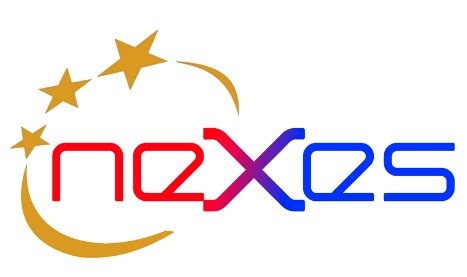
Projects
eCtouch Braille International
eCtouch Braille International will extend the eCtouch app, specially adapted for people with deafblindness and visual impairment who use braille displays. Some of the users still use old analog text phones. But as the analog phone network in Sweden will be shut down in 2024, such a solution will cease to work. It is important that eCtouch replaces the old analog text phones as soon as possible, so that these users are not left without a working real-time remote communication. For eCtouch to be adapted to the users' needs, user testing will play a central role in the project. Users in both Sweden and Spain will test the new functions in a pilot where they can make calls with eCtouch.
The project is coordinated by Omnitor with The World Federation of the Deafblind (WFDB) as a subcontractor. WFDB is responsible for user testing in Spain. The project started in October 2023 and runs until March 2025.
SHAPES
SHAPES (Smart and Healthy Ageing through People Engaging in supportive Systems) addresses the challenge of the aging population in Europe. With higher age the risk of impairment and deteriorating health increase. SHAPES’s goal is to improve the health, wellbeing and independence of those citizens while enhancing the long-term sustainability of health and care systems in Europe. This will be accomplished by deploying the SHAPES platform that consists of a wide range of digital solutions for supporting and extending healthy and independent living for older individuals. Omnitor will contribute with novel remote communication solutions and will lead two pilot test sites in Sweden.
SHAPES is coordinated by the Assisting Living and Learning Institute at Maynooth University. The consortium consists of 36 partners from 14 countries. The project started in November 2019 and will run for four years. SHAPES's budget is 21 million euro.
Read more about the project https://shapes2020.eu/
Read the SHAPES scientific publications
Previous projects
AIMES
AIMES’s (Advanced internet-based multimedia Emergency Services) goal was to let the emergency service take advantage of the powerful tool the citizen has using the smartphone. The citizen can place video calls and share information, but the emergency service often only accepts traditional voice calls. AIMES bridge the technology gap between the citizen and the emergency service. This makes it possible for citizens with disabilities to reach the emergency service with video, audio and text in real-time. This also enables the citizen to use their emergency app across Europe. AIMES builds on the PEMEA (Pan-European Mobile Emergency Application) standard.
AIMES was coordinated by Deveryware in Spain. AIMES started in January 2020 and ended in January 2022.
Read more about the project in the AIMES flyer or the website https://aimes-eurostars.eu/
NEXES
NEXES (Next Generation Emergency Services) researched and tested how novel IP-based communication could improve the emergency service's efficiency and situational awareness in an emergency situation. NEXES enables the citizen to communicate with audio, video and text in real-time which gives citizens with disabilities equal access to emergency services. The citizen can also share vital information with the emergency service e g exact location and language preferences. The project built a reference platform for next-generation emergency services (NG112) that was validated by end-users such as citizens, emergency service, ambulance, police and the fire brigade. Omnitor managed the work to implement infrastructure and emergency apps for citizens and first responders.
NEXES was coordinated by RINICOM in the United Kingdom. The consortium consisted of 16 partners from 9 countries. The project started in 2015 and ended in 2018. NEXES's budget was over 5 million euro.
eCweb
eCweb solved the issue that it often is complicated to contact companies, organizations and authorities if you would like to communicate with sign language. It was also desired by companies, organizations and authorities to be accessible in many languages including sign language. The project built a web-based solution that only required a modern web-browser. If a company wanted to be accessible in sign language, they just added a link on their website. When the customer clicked on the link the call was connected to the company with audio, video and text in real-time.
eCweb was coordinated by Omnitor. The project started in 2015 and ended in 2017.
ACE
ACE’s (Accessible Communications for Everyone) goal was to break down barriers to facilitate communication for deaf, hard of hearing, speech impaired and deaf-blind citizens in the US. The communication should work seamlessly with family, friends, businesses and authorities. The project included remote communication (video, audio and text in real-time), automatic speech to text and text to speech functionality.
ACE received financing from FCC (Federal Communications Commission) in the US. Omnitor was participating as a technical subcontractor 2015-2016.
Cloud4all
Cloud4all (Cloud platforms Lead to Open and Universal access for people with Disabilities and for All) ensured that different IT-based devices or software adapted automatically to different individuals’ needs and preferences. This entailed devices such as smartphones, computers at the library and public ticket machines at the central station. An individual’s need could be extra-large text and black text on a white background if the individual had a visual impairment.
Cloud4all was coordinated by Ilunion in Spanien. The project started in 2012 and ended in 2015.
RERC-TA
RERC-TA (Rehabilitation Engineering Research Center on Telecommunications Access) implemented solutions that enabled people with disabilities to migrate to novel remote communication without losing access to the emergency service or the possibility to call other citizens on legacy telecommunication networks or equipment.
RERC-TA received financing by the US National Institute on Disability and Rehabilitation Research (NIDRR). The project was coordinated by the University of Wisconsin. The project started in 2009 and ended in 2015.
REACH112
REACH112 (Responding to All Citizens Needing Help 112) offered accessible remote communication for citizens with disabilities both in the daily communication and in case of an emergency. Five countries in Europe offered accessible communications solutions. In Sweden, a one-year-long pilot was conducted with real emergency calls. When the citizen called 112 a 112 call-taker and a sign language interpreter was connected in a three-party conference.
REACH112 was coordinated by IES Solutions in Italy. The project started in 2009 and ended in 2012.
Call direct
Call direct made it possible for a user of the relay service to only need to give one phone number to relatives, friends and co-workers. Prior to the project the user needed to give the number to the user and the number to the relay service, this made connecting a call to the user a two-step process and hence complicated. Call direct tested different approaches to connect the relay service with one phone number in a one-year pilot with 60 users.
Call direct was coordinated by Omnitor. The project received financing from PTS (Post- och telestyrelsen). The project started in 2006 and ended in 2008.





